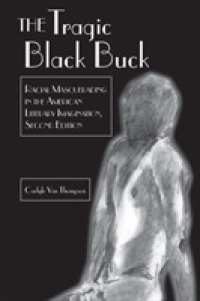- ホーム
- > 洋書
- > 英文書
- > Science / Mathematics
Full Description
Although our understanding of the structure and activities of the cell nucleus and of the nanomachines which it contains is increasing rapidly, much remains to be learned. The application and continuing development of the new, powerful biochemical and biophysical methodologies described here are essential in this quest. In The Nucleus, researchers from more than forty leading international laboratories describe state-of-the-art methods for isolating nuclei and their components and for studying their structure and activities, including some pathology-associated features. Volume I: Nuclei and Subnuclear Structures presents an overview of features of the intranuclear environment, followed by the most recent procedures for isolating nuclei from a wide range of cell types including muscle cells, yeast, oocytes, cells with polytene nuclei, Arabidopsis, trypanosomes, and dinoflagellates. The latest methods are described for isolating and working with nucleoli, constitutive heterochromatin, pathology-associated inclusions, and chromatin and for examining glycosylation, sumoylation, and ADP-ribosylation of nuclear proteins. Written in the highly successful Methods in Molecular Biology™ series format, chapters contain lists of necessary materials and reagents, readily reproducible protocols, and tips for troubleshooting and avoiding known pitfalls.
The Nucleus, Volume I: Nuclei and Subnuclear Structures is an essential reference for scientists who are working on our rapidly growing understanding of the cell nucleus and its activities.
Contents
The Intranuclear Environment.- The Intranuclear Environment.- Isolation of Nuclei.- Purification of Nuclei and Preparation of Nuclear Envelopes from Skeletal Muscle.- Isolation of Highly Purified Yeast Nuclei for Nuclease Mapping of Chromatin Structure.- Working with Oocyte Nuclei: Cytological Preparations of Active Chromatin and Nuclear Bodies from Amphibian Germinal Vesicles.- Preparation of Arabidopsis Nuclei and Nucleoli.- High-Yield Isolation and Subcellular Proteomic Characterization of Nuclear and Subnuclear Structures from Trypanosomes.- Methods for Studying the Nuclei and Chromosomes of Dinoflagellates.- The Nucleolus.- Isolation of Nucleoli from Ehrlich Ascites Tumor Cells and Dynamics of Nascent RNA within Isolated Nucleoli.- Time-lapse Microscopy and Fluorescence Resonance Energy Transfer to Analyze the Dynamics and Interactions of Nucleolar Proteins in Living Cells.- Three-Dimensional Reconstruction of Nucleolar Components by Electron Microscope Tomography.- Intranuclear Structures.- The Perinucleolar Compartment (PNC): Detection by Immunohistochemistry.- Isolation of the Constitutive Heterochromatin from Mouse Liver Nuclei.- Isolation of Pathology-Associated Intranuclear Inclusions.- The Nuclear Ubiquitin-Proteasome System: Visualization of Proteasomes, Protein Aggregates, and Proteolysis in the Cell Nucleus.- Interphase Chromosomes.- Multicolor 3D Fluorescence In Situ Hybridization for Imaging Interphase Chromosomes.- Fluorescent Transgenes to Study Interphase Chromosomes in Living Plants.- Analysis of Telomeres and Telomerase.- Combined Immunofluorescence, RNA Fluorescent In Situ Hybridization, and DNA Fluorescent In Situ Hybridization to Study Chromatin Changes, Transcriptional Activity, Nuclear Organization, and X-Chromosome Inactivation.- Analysisof the Mobility of DNA Double-Strand Break-Containing Chromosome Domains in Living Mammalian Cells.







